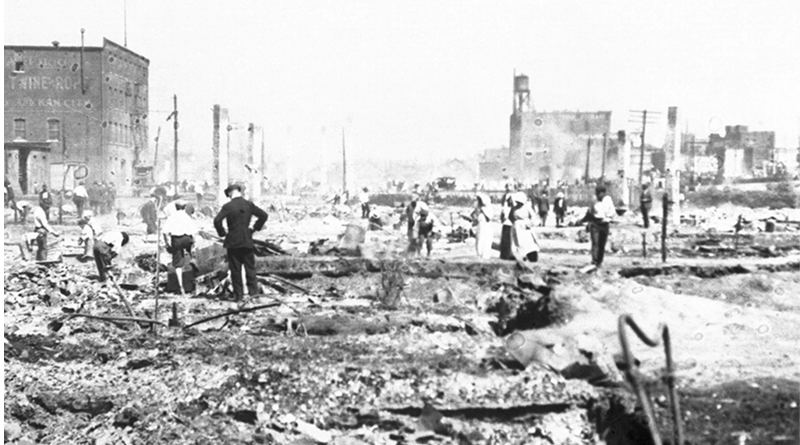These thoughts were written by Daria, one of our 2020 summer interns. The opinions expressed herein do not reflect those of Civitas other than respect for the value of open dialogue.
This summer, as I graduated from high school, I reflected a lot on issues related to social injustice. Especially after the death of George Floyd in May and the street protests that followed, I started thinking how I could improve my understanding of the injustice suffered by people of color in the United States. We had many readings about race relations that were part of the Civitas summer internship, but I wanted to dig deeper, so I also took an online course in Black Humanities at the Saint Louis Community College.
One topic that was addressed in the Black Humanities class and I found particularly interesting was that of the race riots that took place in the United States at various times throughout the 20th century. This is a topic that I was not aware about until recently, when I saw an exhibit discussing it at the Saint Louis History Museum. Although I have always loved to learn about history, this is modern history that I had never heard about, not even in school. Yet this is something I only discovered when seeing a picture collage at the museum and then seeking additional information on.
The picture exhibit, as well as the topic that I will be writing about, is about the East Saint Louis race riot which occurred in 1917. Many African Americans at that time were leaving the South for the North to escape Jim Crow Laws and lynchings, and one of the locations that primarily African Amerians settled in was East Saint Louis in Illinois. However, this migration caused tension between African Americans who were moving upper north and white workers in Illinois and from around the country, as African Americans were often paid less than their white counterparts and thus they were perceived as taking white people’s industry jobs. This particular riot began after mostly white workers at the Aluminum Ore Company in East Saint Louis were replaced by black workers when they voted to take a strike against the company for better wages and working conditions. Following this decision, a group of 1,000 to 3,000 white men attacked the African Americans living in East Saint Louis without provocation from July 1 to July 3, which resulted in the deaths of 100 to 200 black people.
I found the topic of race riots, but especially this particular riot, interesting because the white people who were being replaced by African American workers attacked the black community of East Saint Louis instead of the company that made the decision to replace them. I identify as a political progressive and I sympathize with the workers’ movements across the history of the United States and the world, because I consider that such movements have overall fought for better worker conditions and have helped alleviate poverty among hard working people. However, in the case of the 1917 riots, white workers manifested severe racial prejudice when they thought the reason for their labor problems were newly arrived African Americans and not the companies that were not paying them sufficiently. This has happened again in more recent times when laborers have blamed new immigrants for their low wages rather than blaming corporations, and as a member of a family of first generation immigrants to the United States I am sensitive about the issue particularly in today’s ideologically charged political climate. I think this shows how easily minorities can be targeted for the problems of the majority, even if they are not the actual cause of the problem. This riot also demonstrates how race often intersects with class, as how white Americans have become accustomed to considering themselves of a higher social class than African Americans or other racial and ethnic minorities even when they are poor, and this has caused divide instead of allowing them to fight injustice together. After reviewing the topic of race riots in America, my recommendation is that this topic should be taught in schools more often than it is so that people have a better understanding of their root causes and their consequences, in their own time as well as today.
I never learned about this topic in school or anywhere else until I came across a photo collage exhibit. I feel like the real reason why some people can be so ignorant to issues regarding race is because they have never been presented with any of the history discussing what black people have gone through. Race riots do not occur in the United States today, but oppression against people of color still does and we should use these kinds of histories to continue to make change, such as through the Black Lives Matter movement.


Pingback:Index of 2020 Intern Student Blog Posts - CIVITAS-STL